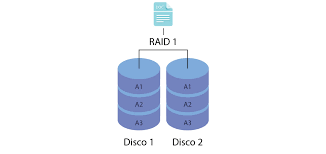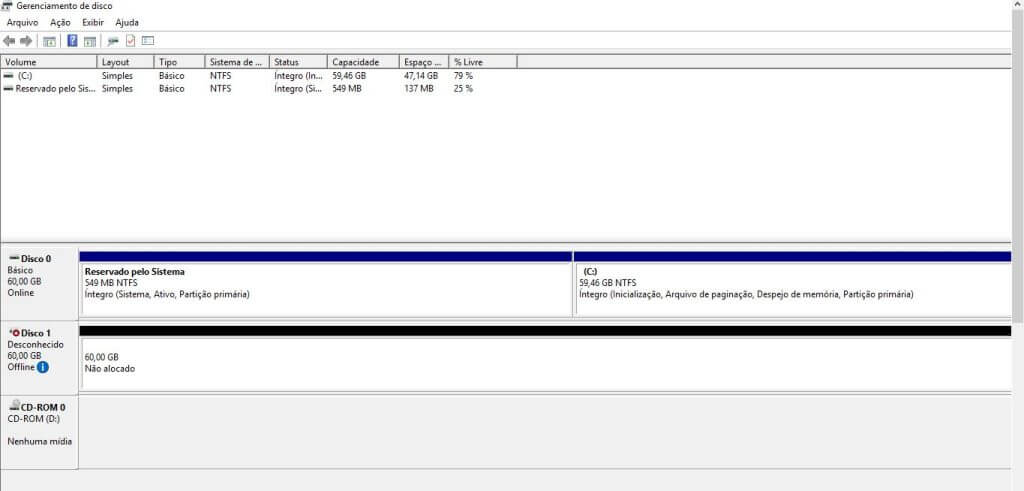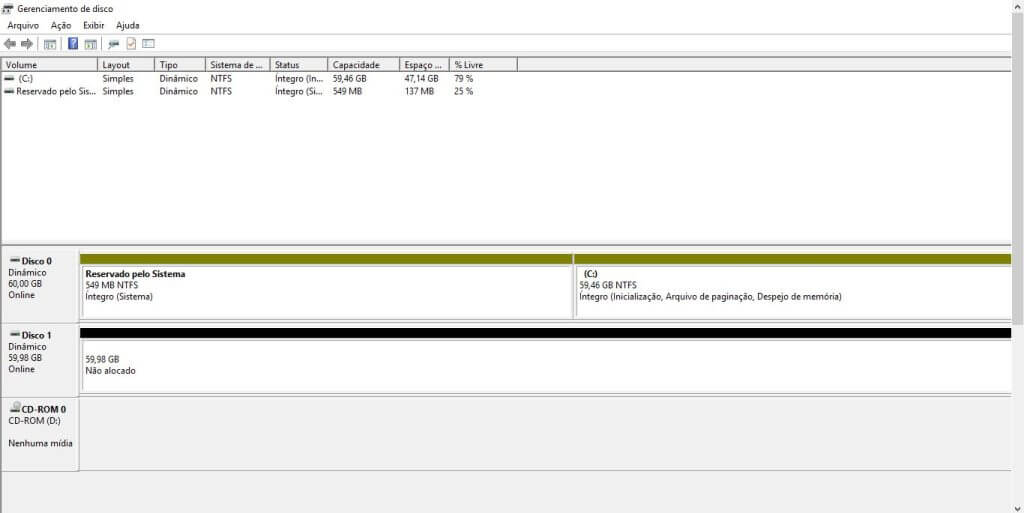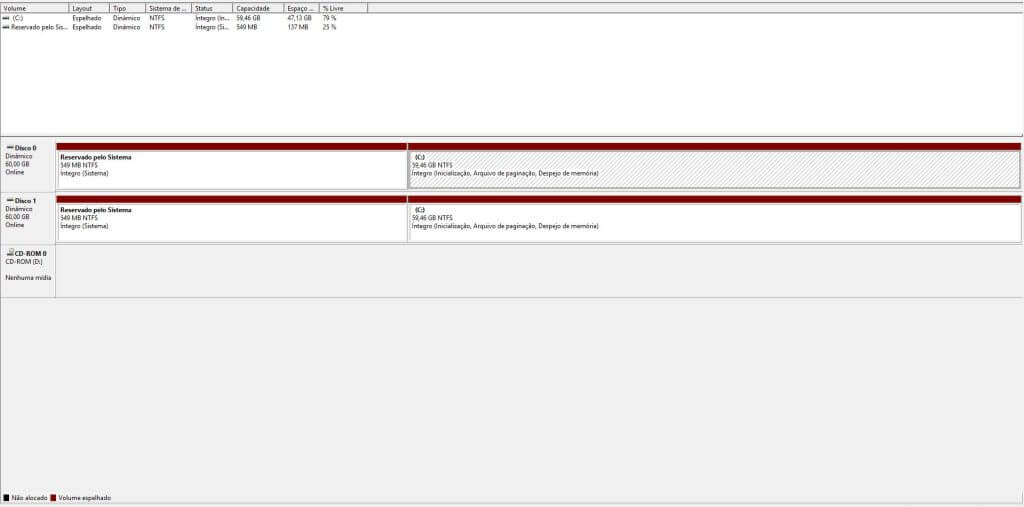Create RAID 1 Windows (Disk mirroring)

In today’s tutorial, I’m going to show you how easy and useful it is to create RAID 1 on disks using Windows. For those who don’t know, RAID stands forRedundant Array of Inexpensive Disks.
RAID is a technology for providing disk fault tolerance, i.e. you replicate your data on more than one disk, so if one of the disks burns out or stops working, you’ll have another disk containing the data, so you won’t lose your files. But remember, RAID is not backup, in the event of a simultaneous failure on more than one disk, you will lose all your data, so always have a backup routine.
There are several types of RAID, there’s RAID 0, RAID 1, RAID 5, RAID 10 and so on. I’m not going to go in depth into how each RAID works, today we’re just going to set up RAID 1, which is when you have two disks, and the data from the first disk is replicated on the second disk, thus making a mirror.

Let’s practice, on the windows desktop right-click on the start menu, then on disk management, this will open the windows disk management utility. In my case, I have disk 0 where the system is installed, and disk 1 is empty, which will be used to create RAID 1.

First we need to make disk 0 dynamic, right-click on disk 0, click next to the name disk 0, then click Convert to dynamic disk, it will turn from a blue color to brown. You must do the same with disk 1, if the disk is not online, you need to right-click on disk 1, and then online, after putting the disk online, make it dynamic just like disk 0, here is an image of how it will look.

Once the disks have been converted to dynamic, the next step is to create the mirror, click on the brown part of disk 1, then on Add mirror, you will be asked which disk you want to use to create the mirror, select the desired disk, in my case disk 1, then click on add mirror, do this for all the partitions on disk 0, both the space reserved by the system and the space on disk c:.
Once the procedure has been carried out, both disks will turn red and a synchronization percentage will be displayed. When this synchronization percentage is 100%, it means that your disk has been replicated and your RAID 1 is configured. You now have disk fault tolerance. Here’s a picture of how it will look.

If one of the disks burns out, you will continue to use your system normally and have your files available. You can also replace the defective disk and restore mirroring, so you can continue to tolerate disk failures.